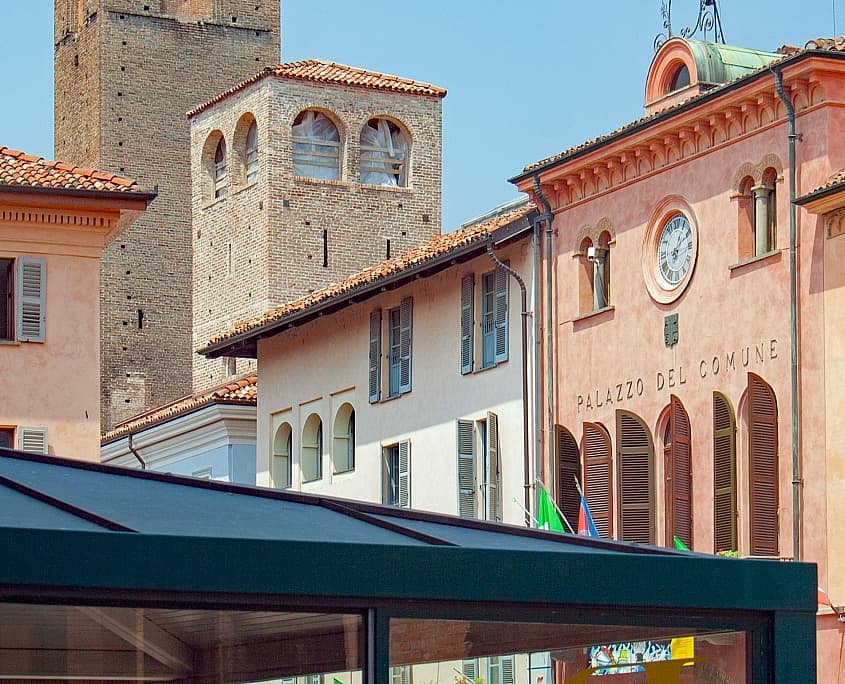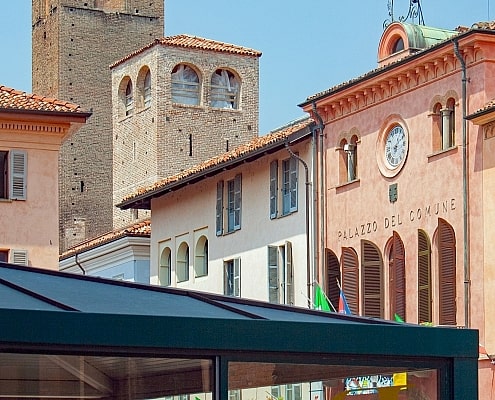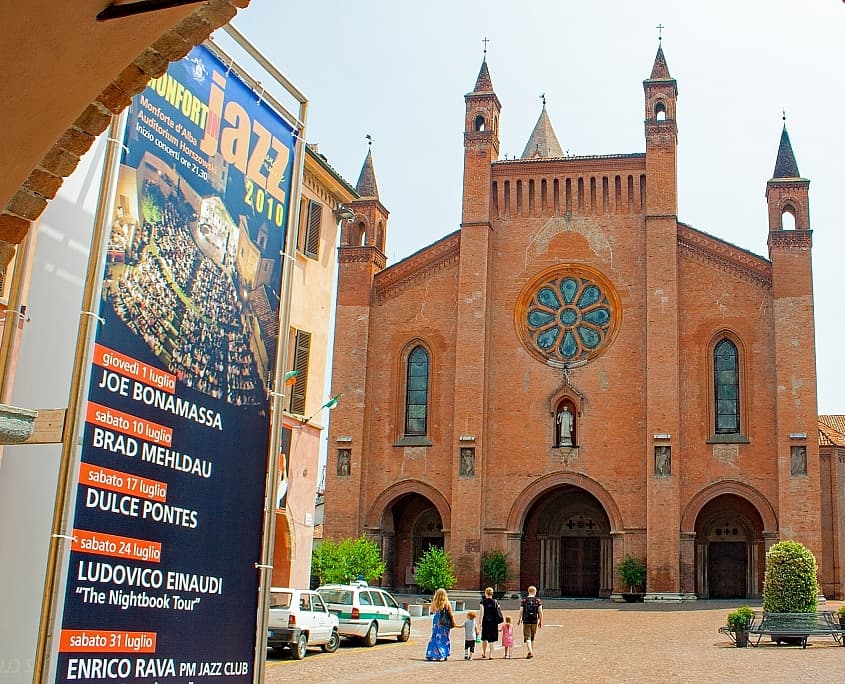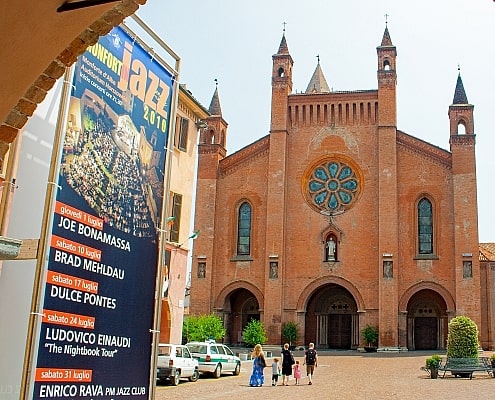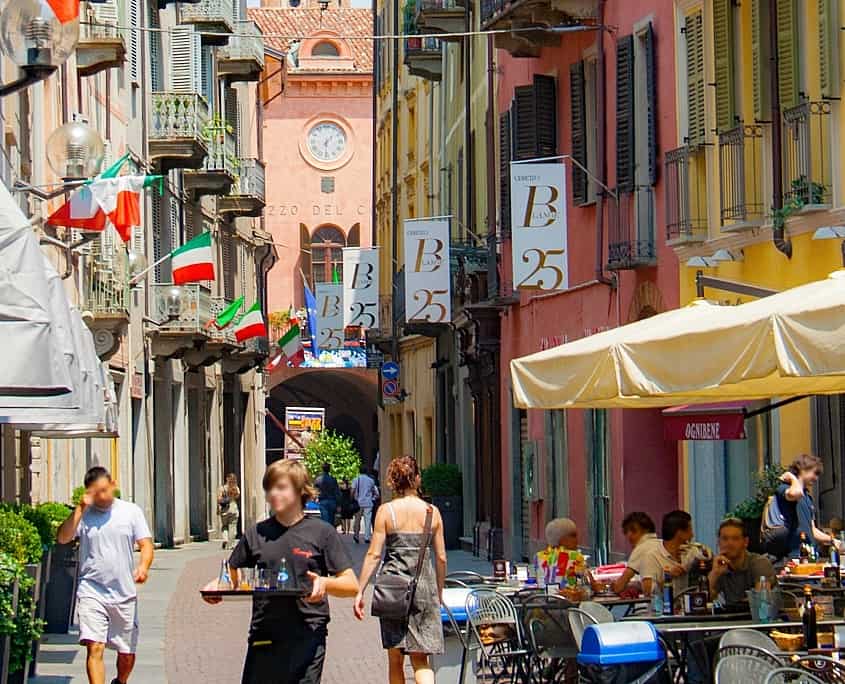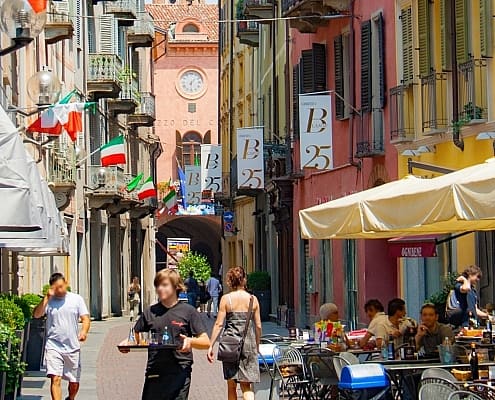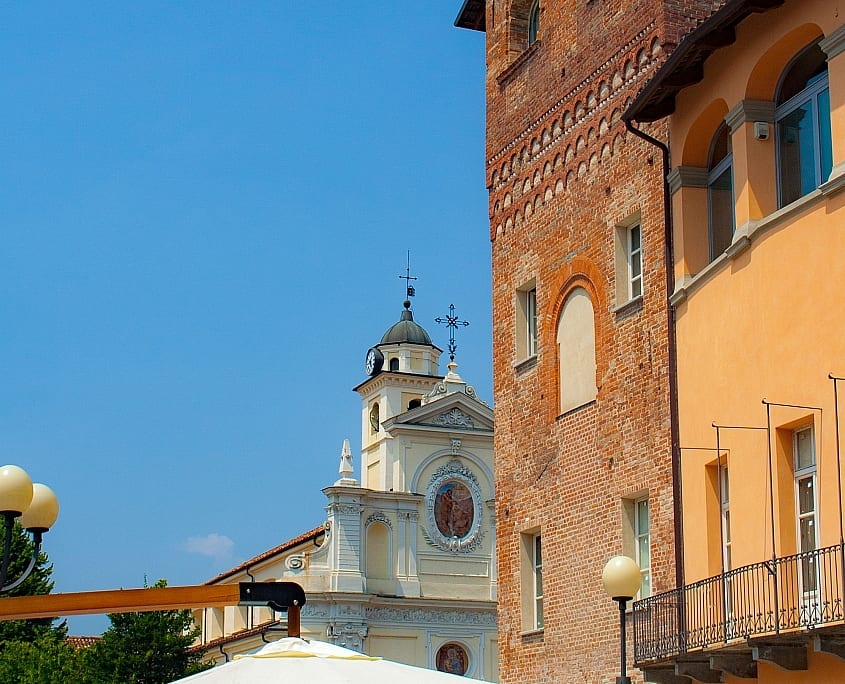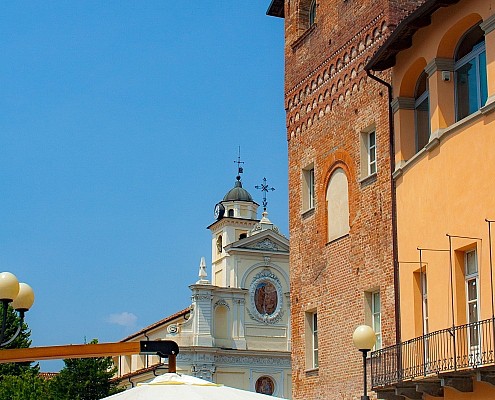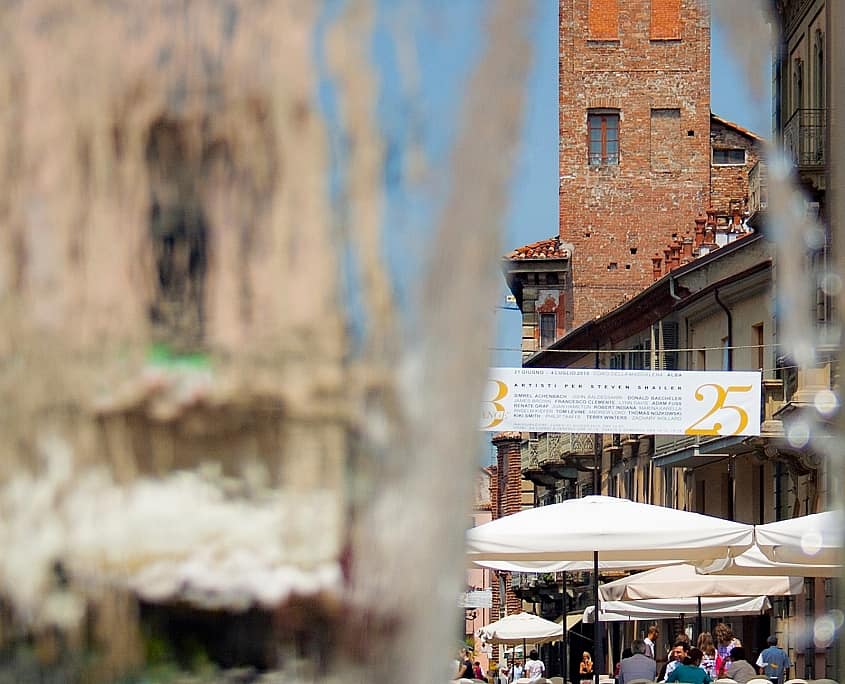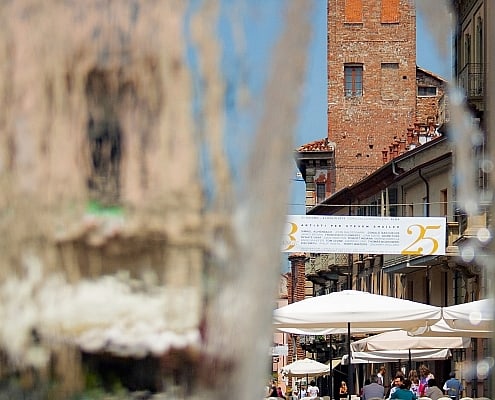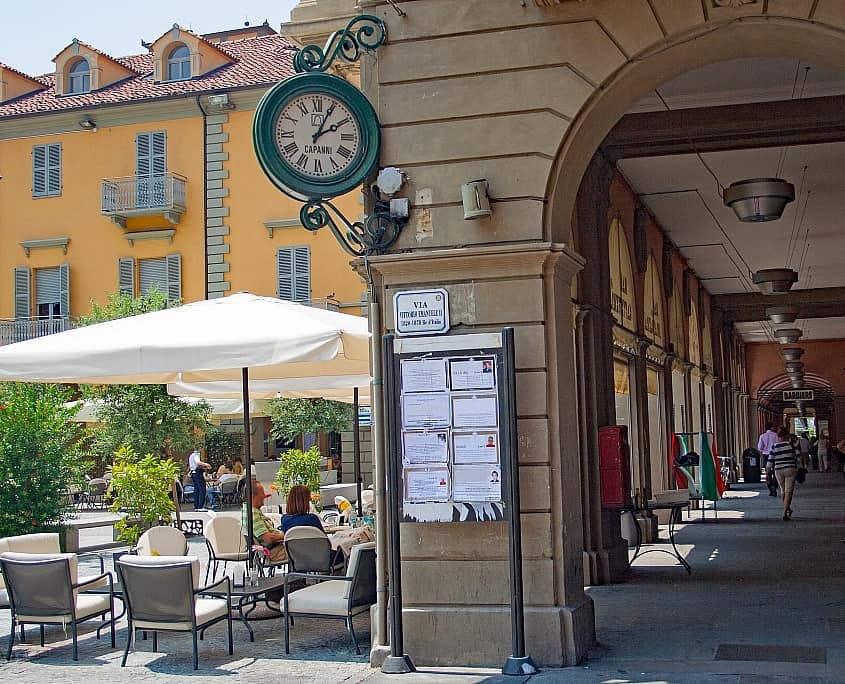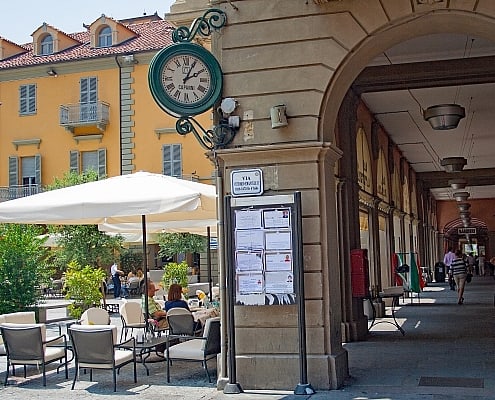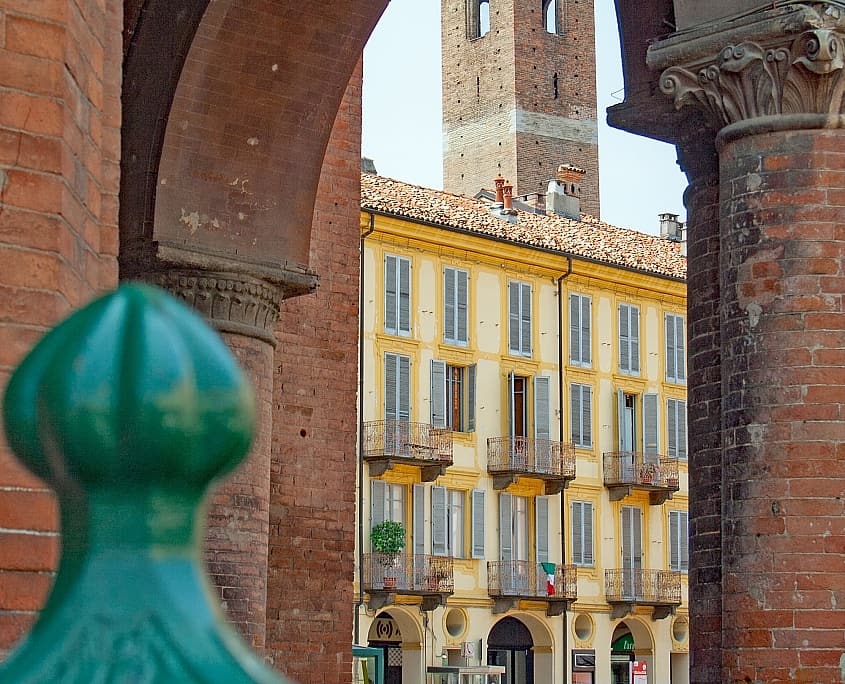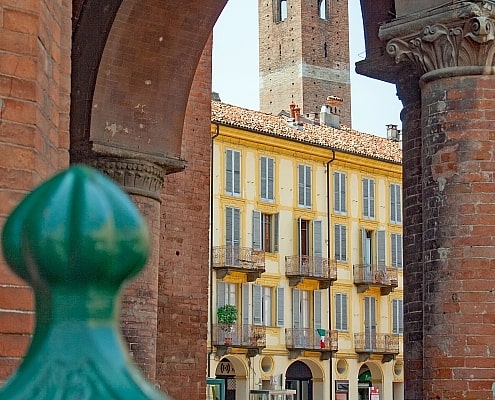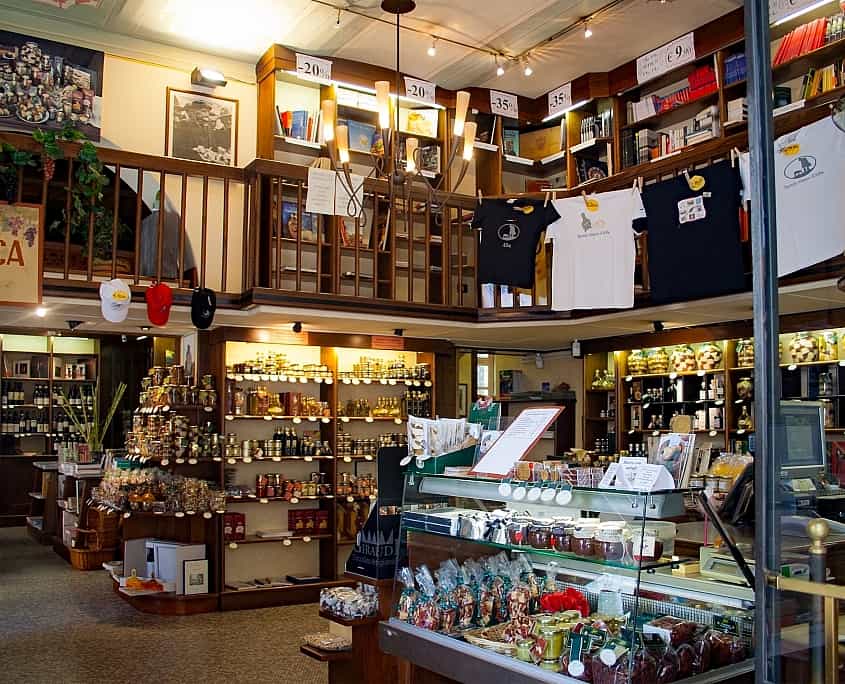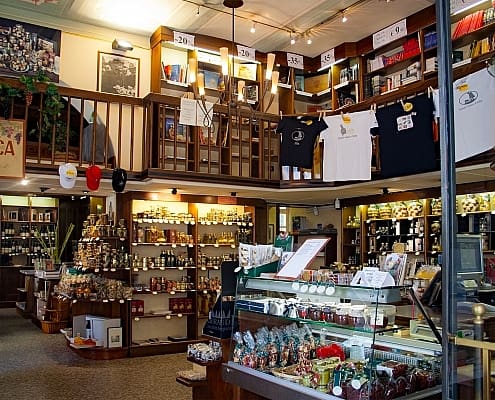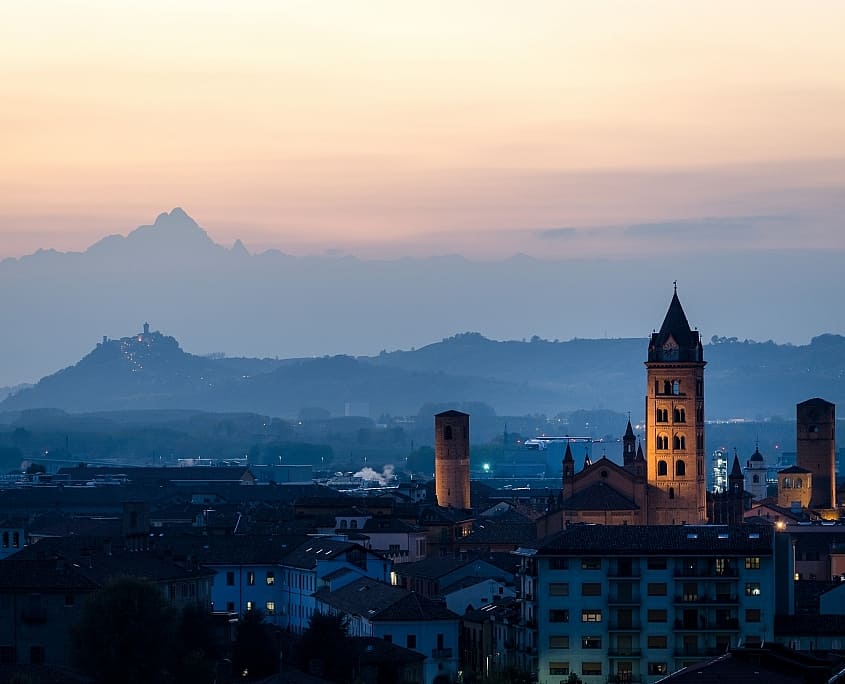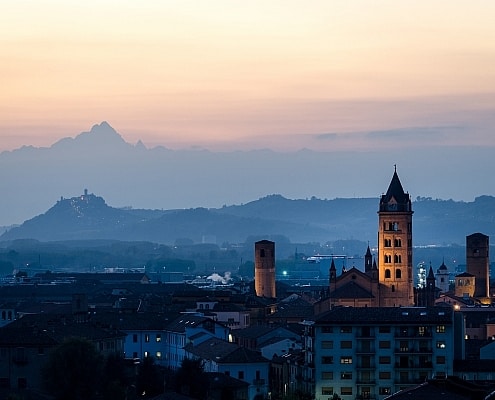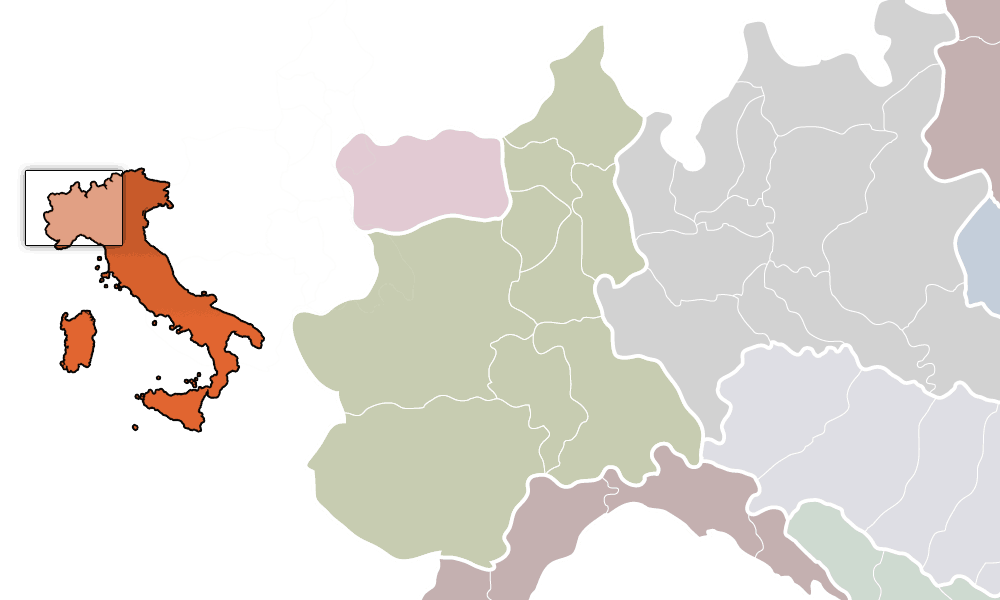Alba in Piedmont
Alba is beautifully nestled in the hilly landscape of the Langhe wine-growing region of Piedmont. The beautiful location embedded in vineyards alone is worth visiting Alba and taking beautiful walks in nature. The lively small town with over 30,000 inhabitants is known throughout the world as the city of truffles. Alba has been recognized by UNESCO as a creative city for gastronomy since 2017.
The small medieval old town of Alba impresses with its beautiful buildings, the towers from the Middle Ages and the cozy atmosphere of the traffic-calmed inner city. Alba is also known as the city of a hundred towers. The towers are located between the houses and shape the image of the medieval city.
Alba is 50 km southeast of Turin, 60 km northeast of the provincial capital Cuneo and 27 km southwest of Asti on the Tanaro River. The Tanaro flows through Alba and forms a beautiful river valley. The valley is a beautiful area for relaxing hikes. The Tanaro brings its water from the 2000m high mountains of Liguria before it continues to flow through Asti and Alessandria and then flows into the Po.
What To See In Alba?
Alba, the city of 100 towers
When you walk through Alba, the towers in the cityscape catch your eyes. These were built in the 14th and 15th centuries. Noble towers presented the status of the rich noble families and were very fashionable during this period in Italy. The higher the family tower stood, the richer the family was. Today there are not that many of the towers to be seen. Some of the towers were rebuilt to the height of the neighboring house roofs or integrated into houses.
A stroll around the city and to the towers takes you through the cozy alleys of Alba. There are small shops and restaurants, where the specialties of the region are offered. In particular, between Piazza Risorgimento and Via Cavour, some of these noble towers have been preserved. In Via Calissano, there is still the Torre di Casa Chiarlone tower, which has been lowered almost to the roof level. You can recognize the house by the beautiful wooden door from the 18th century.
City Wall
The city wall was an important defensive wall in the Middle Ages. It was over two meters high and half a meter thick. The city wall was interspersed with struts and towers and surrounded by a moat. Each of Alba’s four city gates was equipped with one or two watchtowers.
Pedestrian Zone Via Vittorio Emanuele
The main artery through Alba is Via Vittorio Emanuele. Its inhabitants, the Albesi, affectionately call it Via Maestra. As a pedestrian zone, it runs through the historic center with its beautiful medieval, renaissance and art nouveau buildings as well as the Nobel families’ towers. On the way you will pass two important churches. The church of Santa Maria Maddalena and, almost opposite, the church of Santi Cosma e Damiano.
Church of Santa Maria Maddalena
The church of Santa Maria Maddalena served as a Dominican monastery in the 18th century and was a pilgrimage destination for the faithful to visit the relics of Saint Margherita di Savoia. The baptismal font, the large altar with an oval frame with the portrait of Magdalena and the choir with the perspective fresco paintings are particularly worth seeing. The artistic portal consists of 18 walnut panels.
Church of Santi Cosma and Damiano
The church of Santi Cosma and Damiano was built on the remains of the Roman city walls. During reconstruction work around 1760, a mosaic floor made of black and white stones and a bronze medallion with the portrait of the Roman emperor Marco Aurelio were discovered at a depth of 3m.
The medieval house Casa Fontana
House number 11 in Via Vittorio Emanuele is particularly beautiful. A frieze made of terracotta tiles from the Renaissance surrounds the house above the ground floor. The individual plates show dancers, players, ladies and knights dancing between garlands and flowers.
The Town Hall Palazzo Comunale
The Alba City Hall is in the historic center of the city in Piazza Risorgimento. It was built on a former Roman building. In the town hall there are some frescoes that come from the church of San Domenico and paintings from the 14th / 15th centuries.
The Cathedral (Duomo)
The Cathedral of Alba is dedicated to Saint San Lorenzo. It was built in the late 15th century in the Gothic-Lombard style with red bricks. The former late Gothic facade was reconstructed several times and rebuilt in a completely new style in the 18th century.
The statue of Saint Lorenzo is worked into the masonry under the rosette. The four reliefs to the right and left of the columns represent the symbols of the Holy Evangelists. From left to right: The “Angelo” by Matteo, the “Leone” by Marco, the “Bue” by Luca and the “Aquila” by Giovanni. The initials of the four symbols of the Gospel represent the name of the city of ALBA in this order. Angelo (Angel), Leone (Lion), Bue (Bull), Aquila (Eagle).
The famous bell tower of the cathedral dates from the 13th century and was rebuilt in 1477. It is one of the highest in Piedmont and still houses the original bell.
Via Cavour and Piazza Pertinace
Via Cavour is another main artery of Alba, whose beautiful arcades create an atmosphere of the Middle Ages. Remains of the Roman city wall can still be seen in Piazza Pertinace.
Church of San Paolo
The impressive temple on Piazza San Paolo dates from 1925. The cast bronze portal by the sculptor Narciso Cassino is huge.
Local delicacies, white Trüffel and Barolo wine
Alba is famous worldwide as the city of the best truffles. The truffle markets take place in autumn. In Alba, the coveted and sinfully expensive white truffles are traded at the highest prices. A very characteristic scent pervades the streets during this time. The buyers are romping around in the Galleria della Maddalena, where the truffles find their gourmet after a negotiating game and exchange of words from the market barkers on Saturdays and Sundays in October and November from 9 a.m. to 8 p.m. The Fiera del Tartufo Bianco takes place every October / November with numerous manifestations, exhibitions and markets.
In addition to the truffles, other specialties from Piedmont can be found in Alba. These are the famous wines Barolo, Barbera, Barbaresco, Dolcetto and Nebbiolo. Wouldn’t it be wonderful to come for an extensive wine tasting? And you might have guessed it. There should be some local cheeses. And there are!
Then there are the meat cold cuts like salami and the sweet delicacies of the chocolate masters. Another old tradition is the donkey race “Palio degli Asini”, which dates from the Middle Ages and has been adopted into the folk estate.
History of Alba
Alba has a millennia-old history that dates back to the Neolithic of the 6th to 3rd millennium BC. The people of Celtic origin were sedentary and lived in round huts. They used the green stone as a cutting tool and were able to manufacture ceramics. Later bronze and iron were added to make tools.
The name Alba comes from the Ligurian vocabulary. In the Roman Empire the settlement Alba Pompeia was baptized and certified as a Roman municipality. As Alba was in a strategically important position for trade, the city grew rapidly and aqueducts and a drain of the debris towards the Tenaro river were built.
Remains of Roman rule are still in Piazza Pertinace under the Palazzo Marro. In the place of Palazzo Marro was a large temple, which was surrounded on three sides with arcades and was open to the east, where the Roman Forum was in today’s Piazza Risorgimento. The remaining foundations below Piazza Peritinace are made in the cement of the Roman Empire.
The area lived from cattle breeding, agriculture and wine growing.
Changing rulers determined the history of the Middle Ages: the Burgundians, the Goths and Lombards, the Carolingians of the West Germanic Franks were replaced by the Hungarians and Saracens. There were later power struggles between the Visconti (Milan) and the Gonzaga (Mantova) as well as the Savoyers and Napoleon, who declared Alba a republic.




